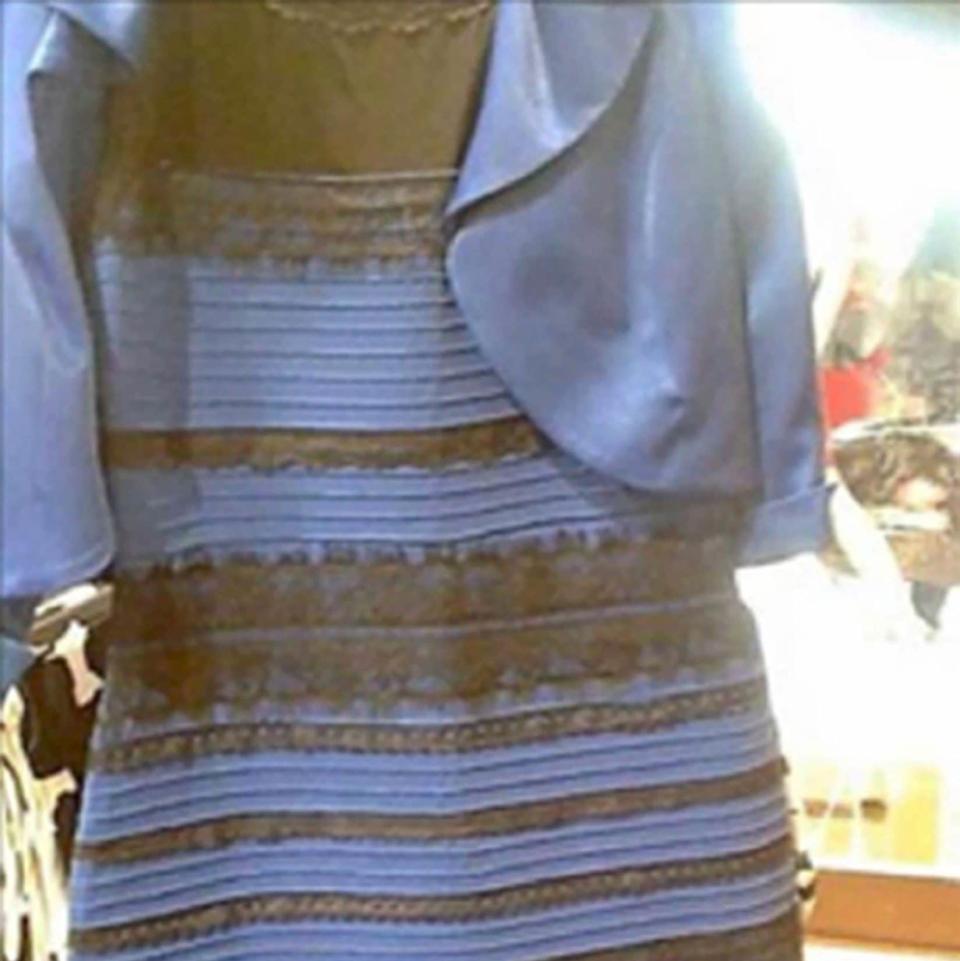We’ve become accustomed to frenetic discussions erupting online about just about anything, whether it’s serious world events or a culturally provocative act like an American microwaving a cup of tea. But in 2015, a debate over whether a dress was white and gold or blue and black was one of the first to ‘break the internet’, involving world celebrities such as Taylor Swift and Kim Kardashian. returns with a twist that casts a dark veil over our frivolous color feud.
It was at Keir and Grace Johnston’s wedding on the Scottish island of Colonsay that mother of the bride Cecilia Bleasdale wore the debate-inspiring garment. Nine years later, the family is in the news for a completely different reason.
At the High Court in Glasgow, 38-year-old Keir Johnston, who works as a petrol station attendant, has pleaded guilty to endangering his wife’s life. The court heard that on March 6, 2022, Johnston pinned her to the ground and strangled her before brandishing a knife. Grace called 911 and told an operator, “My husband is trying to kill me.”
It’s a far cry from the original dispute over “the dress” – although considering it was just a discussion about clothes, it reached strangely hysterical levels.
It all started a week before the Johnstons’ wedding in February 2015. Bleasdale, Grace’s mother, was at the Roman Originals store in Cheshire with her partner Paul Jinks to try out different clothing options. She photographed three and sent the photos to her daughter, with a text saying she had bought the third dress for £50. “The white and gold one?” Grace replied. No, said a stunned Bleasdale, “it’s blue and black.” Her daughter responded that if she really thought that, “you should see a doctor.”
Even more confusing was that Jinks – even though he had seen the actual dress in the store – also saw it in the photo as white and gold. But Grace’s younger sister Phoebe thought it was blue and black, as did Grace’s fiancé. How could people see such different colors in one dress?

A stunned Grace posted the image on Facebook, hoping her friends would support her, but they were similarly divided. The debate consumed their island community, but it wouldn’t have gone any further without Caitlin McNeill.
The Scottish singer was good friends with the Johnstons, “and they asked me to put together a band to play at the wedding,” she recalls. McNeill had heard all about the dress and how it had “caused a bloodbath on Facebook”. She added: “[The band] forgot about it until we saw it at the wedding, and it was clearly blue and black.
McNeill posted the dress photo to her Tumblr blog on February 26, also hoping for a definitive answer. Instead, the argument went global.
BuzzFeed journalist Cates Holderness noted that McNeill’s post had received more than 5,000 “notes” (i.e. comments) in just two hours, “all people just yelling at each other and going crazy.” So Holderness asked her team what color they thought the dress was. “At the same time, one said ‘blue and black’ and the other said ‘white and gold’. Within five minutes, twenty people were behind my desk, loudly debating.”
Holderness quickly put together a BuzzFeed article with a survey, published it and went home. That night, “the dress” blew up on Twitter, now In total, there were 4.4 million tweets about #thedress in just 24 hours.
When Holderness got off the train in Brooklyn that evening and answered the phone reception, she couldn’t even open Twitter because it kept crashing. “I thought someone had died,” she recalled. “People were texting me from work, but also my family members, saying ‘you’re ruining our lives!’ And I thought, ‘Oh s—, what have I done?’”
Coincidentally, Adam Rogers, the science editor at Wired, had been studying human perception of color while at MIT and thought he knew what might be going on. “But I suspected we were in a race — that every science reporter in the country would see the same angle.”
Rogers contacted Wellesley College neuroscientist Bevil Conway, a specialist in color and vision, for his opinion. Conway attributed the phenomenon to the “surprisingly crappy” image, meaning it was not clear what the light source was, and therefore the color. So the brains of several people were “in the process of removing the orange or blue component.”
Rogers warned Conway: “Your tomorrow won’t be the same” – and he was right. The Wired article subsequently attracted 32.8 million unique visitors and Conway was inundated with interview requests.
Taylor Swift weighs in
It was at this point that the celebrities got involved. Taylor Swift tweeted: “I don’t understand this strange clothing debate and I feel like it’s a trick somehow. I am confused and scared. PS it is CLEARLY BLUE AND BLACK.” Justin Bieber sided with her.
But Katy Perry, Julianne Moore and Anna Kendrick all saw white and gold. Kim Kardashian and her then-husband Kanye West disagreed: she was team white, he was team blue. Lady Gaga unhelpfully called it “periwinkle and sand.” Alex Jones wore the controversial gown on The One Show.
A spokesperson for Roman Originals, which made the dress, tried to settle the dispute by confirming that it was blue and black – and that it came in different colours. “We are definitely looking into a white and gold version,” they added cheekily.
As for the family at the center of the story, they were suddenly thrust into the spotlight.
Bleasdale, McNeill and the Johnstons were flown to LA to appear on The Ellen DeGeneres Show. They locked the precious dress in a hotel safe.
DeGeneres gave them funny gifts – sets of half blue and black, half white and gold underwear – and a very serious one: $10,000 (£7,979) and a luxury honeymoon in Granada for the newlyweds.


Some legal wrangling ensued, as Bleasdale technically owned the copyright to the photo of the dress that started it all, but it had been used without her permission. Ultimately, BuzzFeed made a deal with her to acquire the rights to the photo.
However, Jinks subsequently felt that they had been “completely left out of the story”, and was annoyed that numerous companies had used the dress to make money. He added: “Basically they took our property and profited from it without even giving us a credit, a thank you, nothing.”
It also caused a rift within the family. In December that year, Bleasdale admitted that she and Grace had had “a bit of an argument”. They’ve patched things up, but, she explained, “we just don’t talk about it.”
It was certainly an extraordinarily viral moment, and perhaps a perfect summary of this new era of opinion as fact – the concept of “my truth” over objective truth, and the anger that came to characterize every disagreement.
“You strangled her repeatedly.”
Fast forward almost a decade, and the dress is the Johnstons’ least problem.
This week the High Court of Glasgow heard that Johnston’s attack on his wife, at their home in Colonsay in the Inner Hebrides, was the latest in a long period of domestic violence. The incident began after Grace attended a job interview on the mainland, in defiance of her domineering husband, and he subsequently sent her an ominous message saying: “You should support me, but you don’t.”
Johnston announced that he was leaving her. When his wife followed him outside their cottage, he threw her to the ground, pinned her there with his knees and began to strangle her. “She believed Johnston intended to kill her because he was very powerful,” Crown prosecutor Chris Macintosh told Judge Lady Drummond on Thursday.
Macintosh said Grace felt trapped as there is no permanent police presence on the island.
Johnston was found by authorities crouching under a desk in the couple’s cottage with a knife to his throat, but the weapon was safely removed from him.
Lady Drummond remanded Johnston in custody pending sentencing next month, with bail denied as this is “a serious and violent offence”. She said: “You repeatedly strangled her, injured her and endangered her life in what must have been absolutely terrifying circumstances for her.”
It is a horrible irony that when “the dress” was at its peak, the Salvation Army in South Africa used it in a campaign to raise awareness of domestic violence against women. Their slogan: “Why is it so hard to see black and blue?”
Now fashion and abuse have collided again in stark fashion.